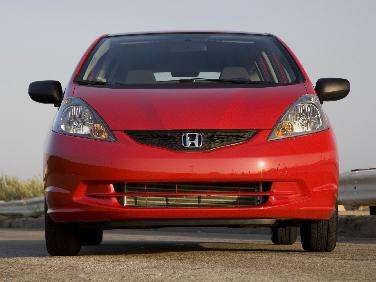Recent Articles
Popular Makes
Body Types
Can Honda Take Fit Shuttle to Future Success?

Last year at this time, it looked like the party was over for the Honda Fit. The subcompact segment was gearing up for an influx of high-quality competitors, sales of the car were down badly and Honda itself was focusing its resources elsewhere (prepping for the launch of the new Honda Civic, trying to get its hybrid lineup on track, etc.). Toss in the fact that the disasters in Japan had put a significant strain on production, and last month had all the makings of a disaster for the Fit.
Instead, it continued its 2011 sales renaissance by earning enough sales to make it the second-best-selling subcompact in the U.S. in May, trailing just the all-new Ford Fiesta. And now a surprising new rumor about the Fit family has popped up: Honda recently launched a sort of extended Fit wagon in Japan—called the Fit Shuttle—and while the party line had long been that this vehicle wouldn't be destined for American consumption, Reuters is now indicating otherwise.
And not only would this be good news for efficiency-minded consumers, but it also could give Honda a timely entry in the suddenly hot small-wagon niche, where it would compete against vehicles like the coming Toyota Prius v and Ford C-MAX twins.
Let's set the stage with a quick recap of the 2010 subcompact sales story, which actually can be boiled down to two words: Nissan Versa. The Versa sold nearly 100,000 units last year to run away with the segment's sales crown, almost doubling the number of Fits moved by Honda. Looking specifically at May of 2010, a typical performance last year for both the Versa and the Fit, the former's sales were up 95.6 percent, reaching the 9,842-unit mark, while the latter saw sales slide down to 4,383 units, a decrease of 23.5 percent.
Flash-forward a year, after the Ford Fiesta has had a chance to establish itself in the marketplace and the Hyundai Accent has begun to roll out, and we find the Fit catching a 46.3 percent sales bounce and finding 5,921 new customers—an amount that trailed only the Fiesta—while pushing up its year-to-date sales to a robust 29,506 units, an increase of 52.3 percent over the same period in 2010.
The Versa drove off ye olde cliff in May, with sales contracting by 51.3 percent, pulling down the car's year-to-date "growth" rate to a negative 13 percent. And while that likely had something to do with the situation in Japan, it's not as if the car was a having a good year before that. In April, Nissan's best U.S. sales month ever, the Versa was down 19.8 percent.
My read on this: The Fit helped lay the groundwork for the new wave of high-quality, higher-priced subcompacts that are starting to hit the market this year—in addition to the Fiesta and Accent, remember, the Kia Rio and Chevrolet Sonic are due soon as well—and we're now getting to the point where customer preferences are starting to catch up to the relatively premium package offered by the Honda. In fact, at this stage in the game, the Fit now has a slightly lower MSRP ($15,100) than the Fiesta hatch ($15,500).
The Honda Fit Shuttle is another effort by automakers to put the versatility of a minivan into a smaller, more fuel-efficient package that still offers enough room to be a full-time family hauler. The mini-minivans, like the Mazda Mazda5 and Kia Rondo, were among the early attempts to do this, but really haven't caught on here in the U.S., and their three-row seating solutions appear to have gotten a lot of the blame.
That's my thinking anyway, and would help explain why we're getting the five-seat Prius v instead of the new seven-seat Prius currently on sale in Japan, and why Ford changed direction to follow suit with the C-MAX minivan. The original plan was that U.S. customers would get the European Grand C-MAX, with "5+2" three-row seating, but the Blue Oval is now only going to offer the five-seat model, albeit in both hybrid and plug-in hybrid flavors.
Like the Toyota and Ford products, the Fit Shuttle puts more of a focus on highly configurable interiors with lots of storage and cargo room, and fewer seats does mean more room for the remaining passengers.
And who knows, maybe it will be more sales for Honda, too.